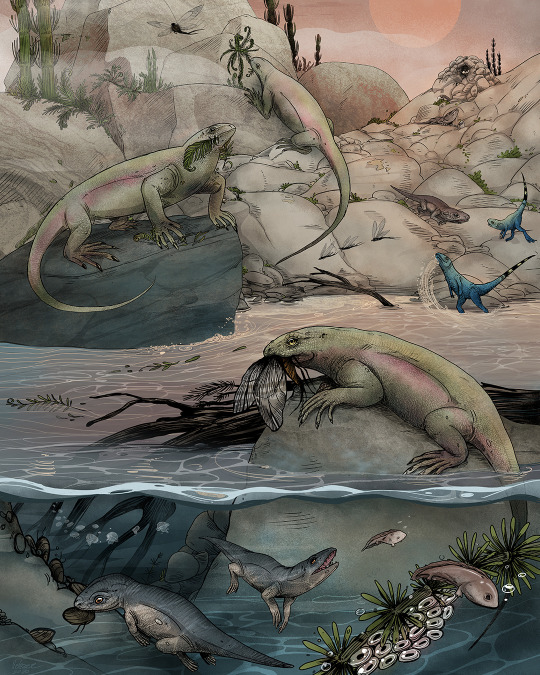#eudibamus

Bromacker Contest Submission #2
DINNER AT DUSK
Thuringian Forest Basin - Early Permian
From the dry season to the wet season - During periodic heavy rainfall ephemeral water sources appear. While the basal tetrapods at the tambach formation are well adapted to the dry climate, lots of them are in fact amphibians. Living on a dry savanna that doesn’t know gras yet, amphibians still need warter sources to reproduce. Here you can see speculative larvae and spawn stages of those primitive amphibians, called Temnospondyli. Swimming throug the newly formed pond Georgenthalia clavinasica feasts on the only avaible aquatic life forms: clam shrimps (Lioestheria andreevi), sweet water jelly fish (Medusina limnica) and of course the amphibian spawns. Alternative proteine sources are the nests of non-amphibian tetrapods. Here raided by another Temnospondyli called Tambachia trogallas.
The big caseids Martensius bromackerensis are also drawn to the pond. While their young get their nurishment from insects like Palaeodictyoptera, it is believed that the adults can gain the ability to digest plant material like ferns by enriching their guts with special bacteria.
The biped bolosaurid Eudibamus cursoris surely is one highlight of the bromacker paleobiota but here it’s just enjoying the pool.
Like what you see? Leave a tip :)

